Red-lored Amazon parrots are impressive and charming birds prized for their beauty and intelligence. One of the most popular pet parrots, they have comical personalities, and most have an incredible talking ability, which adds to their appeal. This species needs a lot of attention as well as training to prevent behavior problems.
Species Overview
Common Names: Scarlet-lored Amazon, Red-fronted Amazon, Golden-cheeked Amazon
Scientific Name: Amazona autumnalis with three subspecies: Salvini Amazon (A.a. salvini), diademed Amazon (Amazona autumnalis diadema), lilacine or Ecuadorian red-lored (A.a. lilacina)
Adult Size: 12 to 14 inches
Life Expectancy: Up to 80 years
Origin and History
The red-lored Amazon parrot is native to Mexico, Central America, and South America. Their primary range is from eastern Mexico to Ecuador, though there are a few flocks in central Brazil.
They enjoy nesting in tree cavities of the tropical forests and tend to live in small flocks. In some areas, human development and trapping for the pet trade have endangered these Amazons.
This species was first noted in 1758 by Swedish zoologist Carl Linnaeus, creator of the modern taxonomy system. There are a few subspecies of the red-lored Amazon parrot, which look the same with differences in size.
How to Select the Right Pet Bird for You
Temperament
Red-lored Amazons are intelligent, charismatic birds that like to be with their owners as well as other birds. They bond quickly with human family members and will become a loyal part of the family.
These birds are very talented talkers and singers. Amazons, in general, are rather vocal birds that enjoy interacting with you verbally. Potential owners should also be aware that all Amazons can scream and most often do. If you adopt one, expect a wake-up call at sunrise and sunset every day.
- Like many parrots, these birds can be aggressive and bite if not properly trained. Protect against them chewing up electrical wires (a serious hazard) and other things around the house. They are known for having a naughty streak, especially after they bond with one person, and may use their beaks to "discipline" their keepers or other members in the household who aren't their bonded person.
Speech and Vocalizations
Like most Amazon parrots, red-lored Amazons have a renowned ability to mimic human speech. They pretend like they are talking or that they are a part of your conversation. It may sound like silly mumbling, but it is fun to listen to. They may develop a small vocabulary of words. These select words may be distinct and clear. They can imitate laughing, beeps, and alarms, which are usually the first things they learn and repeat.
Red-Lored Amazon Colors and Markings
The red-lored Amazon has primarily vivid green feathers. It boasts bright patches of red on its forehead, which is where it gets its name. There are also touches of red on the wings, and some birds have yellow or orange on their cheeks. They have horn-colored beaks with black tips and greenish-grey legs.
Red-lored Amazons are a monomorphic species, a fancy way of saying that males and females look alike. Their eye color can vary, from a golden orange iris to a brown one.
Caring for the Red-Lored Amazon
At a minimum, a cage for a red-lored Amazon should be about three-foot square. Of course, bigger is always better. Provide the largest cage you possibly can for your parrot. To keep these birds from getting restless and into trouble, time out of their cage is a must. Play gyms can provide an oasis for your Amazon where it can be away from its cage and viewed as a safe perch.
Red-lored Amazons have a reputation for being noisy. Potential owners should keep this in mind if they are sensitive to loud noises or have close neighbors. While training can help curb undesirable vocalizations, expect to deal with screaming; this is their natural behavior in the wild.
Common Health Problems
Amazons are prone to bacterial, viral, and fungal infections like psittacosis and aspergillosis. Birds that do not receive ample mental stimulation and exercise are susceptible to the self-mutilating behavior of feather picking. If not fed a well-balanced diet, red-lored Amazons have a history of developing fatty liver disease and heart disease, such as atherlosclerosis. Signs of this disease include a distended breast or stomach, lethargy, loss of appetite, and difficulty breathing.
Diet and Nutrition
In the wild, red-lored Amazons eat seeds, fruit, berries, nuts, greens, blossoms, and buds. An Amazon's diet should consist primarily of high-quality pellets and the occasional healthy seed.
A supplement of leafy greens, vegetables like peppers, occasional grains, and seldom nut treats will round out a balanced diet for an Amazon. To quicken your food preparation time and save some money, prepare a large batch of a supplemental mixture of vegetables and grains or "chop."
Offer vegetables or chop daily while fruits can be three to four times a week; fruits are high in sugar and too much can lead to weight gain. Greens should comprise at least 20 percent of the bird's diet. Food shouldn’t be left to linger in your bird’s cage. Any fresh foods or mashes that you place in your Amazon’s cage should be taken away when feeding time is over to avoid bacterial growth.
Exercise
Amazons are active parrots. They should be allowed ample time outside their cage to play and stretch their wings. These birds love to climb and chew. Provide Amazon parrots with plenty of toys, including ladders to climb, ropes, and swings to perch on.
These birds require sturdy toys to clutch and chew. Chewing on wooden and leather toys is an outlet for their instinct of digging for grubs in rotting wood as well as pulling on bark strips to eat or expanding a nest hole. Providing plenty of appropriately-sized toys will likely curb a lot of unwanted, potentially destructive behavior around your home.
Social and friendly
Likes to talk and mimic human sounds
Long-lived bird
Tendency for loud squawks and screams
Requires daily exercise and mental stimulation
Where to Adopt or Buy a Red-Lored Amazon
Contact a parrot adoption and education agency and ask if you can visit their birds. Seeing one of these parrots in its home environment will give you quite a bit of insight into what it's like to live with one. Breeders sell red-lored Amazons in the range of $1,000 to $3,000. Rescues, adoption organizations, and breeders where you can find red-lored Amazon parrots include:
- Adopt a Pet
- Bird Breeders
- Burge Bird Rescue
More Pet Bird Species and Further Research
If you’re interested in similar species, check out:
- Blue-Fronted Amazon Parrot Species Profile
- Orange-Winged Amazon Parrot Species Profile
- Double Yellow-headed Amazon Parrot Species Profile
Otherwise, check out all of our other Amazon parrot species profiles.
Related Article
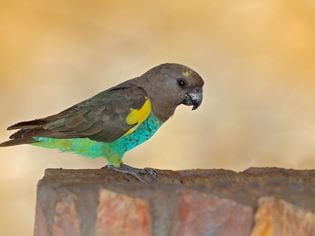
Meyer's Parrot Species Profile
Meyer's parrots are small, stocky birds that are closely related to the Senegal parrot. They ar
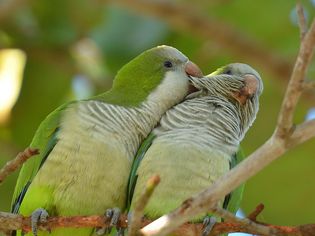
Quaker Parrot (Monk Parakeet): Bird Species Profile
Quaker parrots (or monk parakeets) are known for their charming, comical personalities and their wi
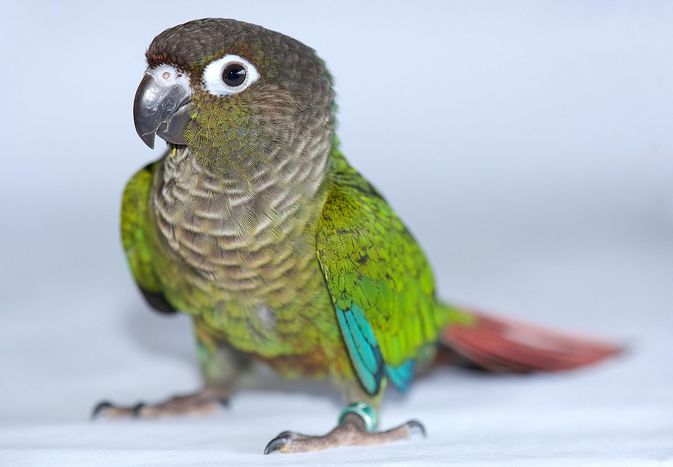
Greek-Cheeked Conure: Bird Species Profile
Popular as pets due to their small size, beauty, and intelligence, green-cheeked conures have
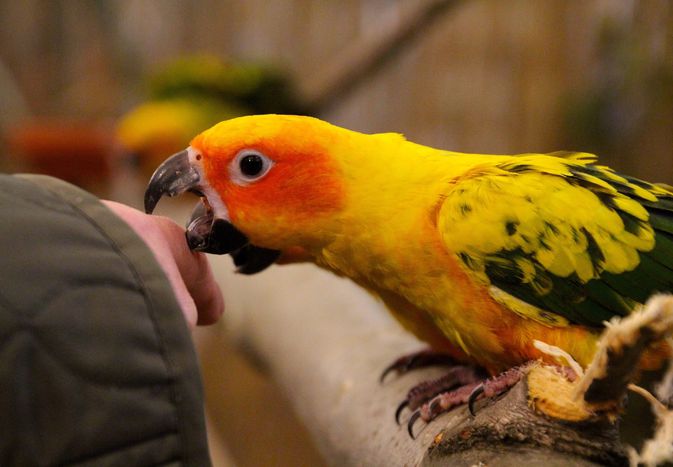
Why Is My Pet Bird Biting and "Beaking" Me?
When a pet bird uses its mouth on your hand, you may just be being "beaked" rather than bit
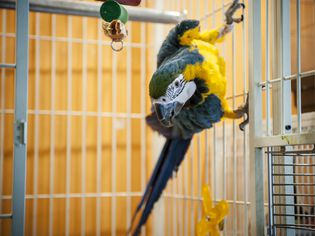
Bird Poop Identification Chart
Most bird owners have heard that it's important to monitor their feathered friend's droppin
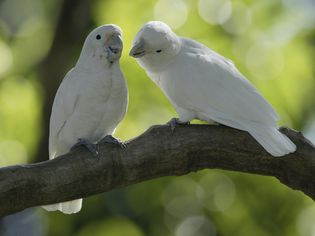
Goffin's Cockatoo: Bird Species Profile
A Goffin's cockatoo is the perfect companion parrot if you have the spare time to devote to it. Thi
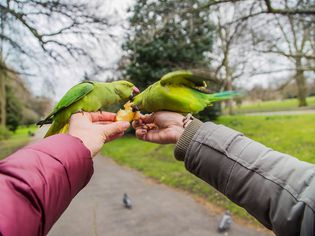
Introducing a New Bird to Your Parrot
You are not alone if you already own a parrot and are thinking about adding another bird to your fa
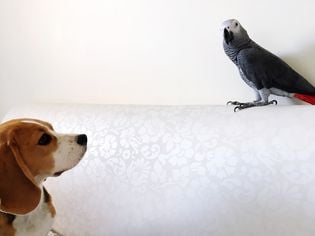
How to Train Your Dog to Be Around Pet Birds
Whether you already have a dog and you are considering a pet bird, or you already have a bird and a
About WhiskerClub
We are a premier digital platform committed to delivering high-quality content to our readers. Our mission is to provide accurate, reliable, and engaging information that adds value to our audience's daily lives.
Our team consists of experienced content creators and subject matter experts who uphold the highest standards of professionalism. In an era of information overload, we curate content with care, ensuring our users receive only the most relevant and trustworthy information.
Beyond just reporting facts, we focus on depth and context. Through expert analysis, comprehensive research, and clear presentation, we help our audience gain meaningful insights and make informed decisions.
We take pride in being a trusted information source for our growing community of readers. Our user-first approach means we continuously adapt to provide content that meets our audience's evolving needs and interests.
Innovation and excellence drive everything we do. We're committed to improving our platform and services to deliver the best possible experience for our users.

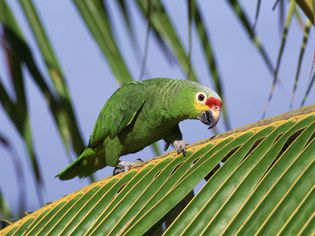
Comments on " Red-Lored Amazon Parrot: Bird Species Profile" :